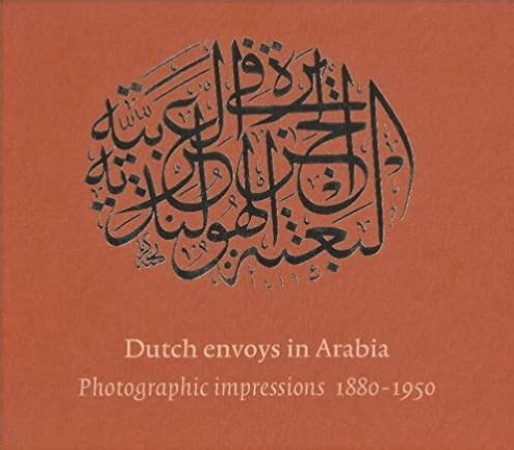
DUTCH ENVOYS IN ARABIA. PHOTOGRAPHIC IMPRESSIONS 1880-1950
Leeuwen, F.C.; Oostdam, D.; Vink, S.A.
89 pp.; c.60 b/w photographs, bibliography. Amsterdam, 2011 (1999). Hardback, in slipcase. Reprint from the 1999 edition.
book nr. 15031 € 125,00
During the first half of the twentieth century, the pilgrimage of Muslims to Mecca lay at the heart of the relationship between the Kingdom of Saudi Arabia and the Kingdom of the Netherlands. This may seem surprising, but in those days more pilgrims travelled from the Dutch colonial empire to Mecca than from any other country. These pilgrims were Dutch citizens from the Netherlands East Indies (now Indonesia), who undertook the long and perilous voyage across the Indian Ocean to fulfill their religious duties. The authorities of Western Arabia welcomed these pilgrims because they were co-operative and spent significant amounts of money on their visits to the Holy Places.
In those days, however, the pilgrimage to Mecca was difficult and sometimes dangerous. This, in 1872, motivated the Dutch to found a consulate in Jeddah in order to safeguard the well-being of the pilgrims. With the rise of King Ibn Saûd in the 1920s, effective measures were taken to protect pilgrims and their situation improved significantly, but successive consuls continued to care for Netherlands pilgrims until after the Second World War, when Indonesia became independent and the mission was handed over to the Indonesians. The focus of the relationship between the two kingdoms then shifted to trade.
This book starts with a description of the pilgrimage to Mecca in the latter half of the nineteenth and the first half of the twentieth century, and reviews the role of the Netherlands Consulate, later a legation, both in supervising Netherlands East Indian pilgrims and also in developing diplomatic relations specifically aimed at stimulating trade and other areas of co-operation between the kingdoms. The foundation stone of the relationship between the two countries was laid by Christiaan Snouck Hurgronje, who is the subject of the second contribution. The third article deals with the life and works of another well-known Dutch Arabist, Daniel van der Meulen, who lived in Jeddah as a diplomat for many years. Both these men were outstanding amateur photographers and therefore the heart of this book contains over sixty photographs showing Arabia as Snouck Hurgronje and Van der Meulen saw it in the late nineteenth and early twentieth centuries. Most of these photographs are preserved in the library of the Royal Tropical Institute in Amsterdam.
During the first half of the twentieth century, the pilgrimage of Muslims to Mecca lay at the heart of the relationship between the Kingdom of Saudi Arabia and the Kingdom of the Netherlands. This may seem surprising, but in those days more pilgrims travelled from the Dutch colonial empire to Mecca than from any other country. These pilgrims were Dutch citizens from the Netherlands East Indies (now Indonesia), who undertook the long and perilous voyage across the Indian Ocean to fulfill their religious duties. The authorities of Western Arabia welcomed these pilgrims because they were co-operative and spent significant amounts of money on their visits to the Holy Places.
